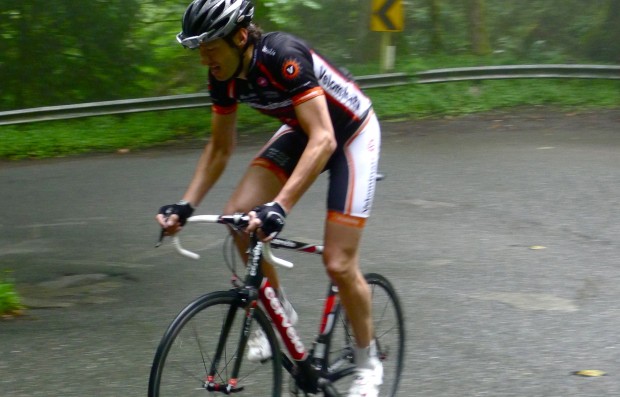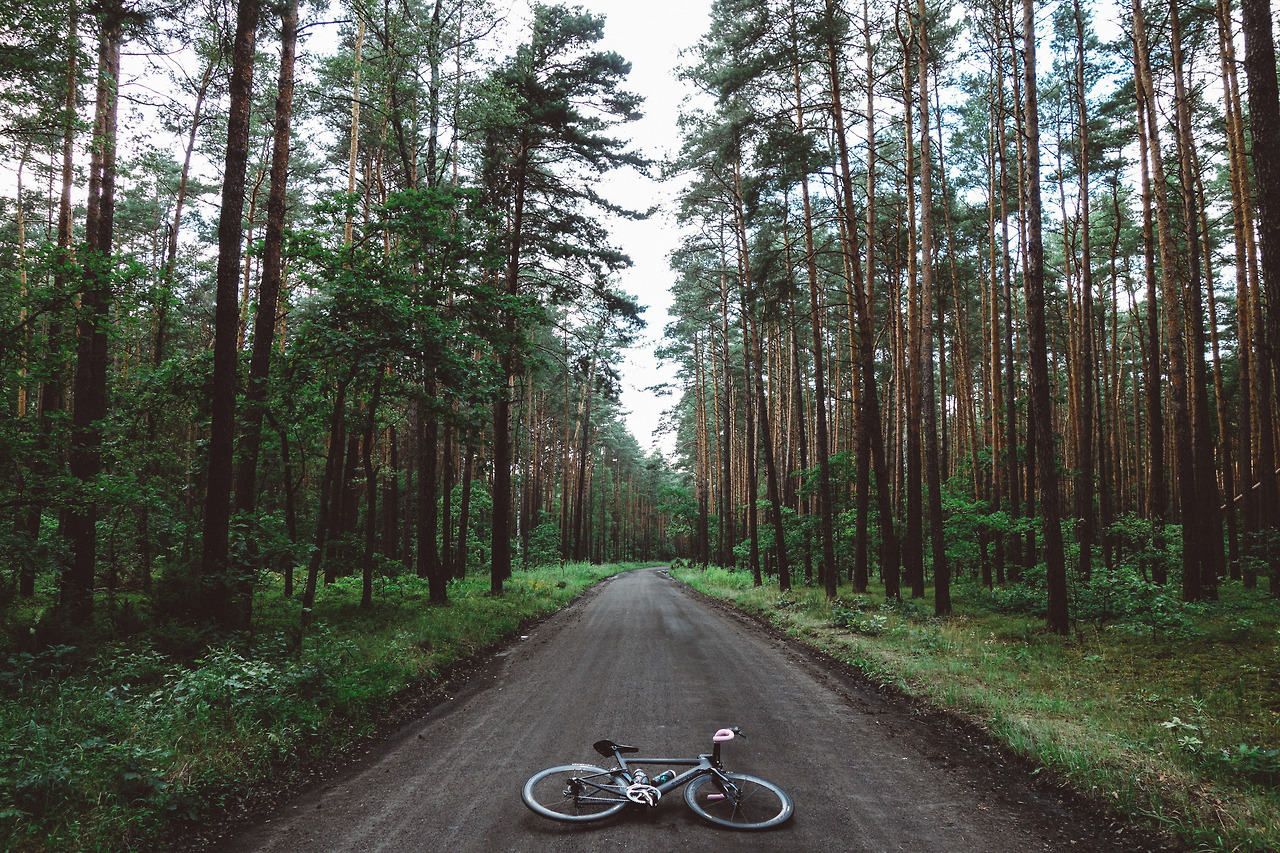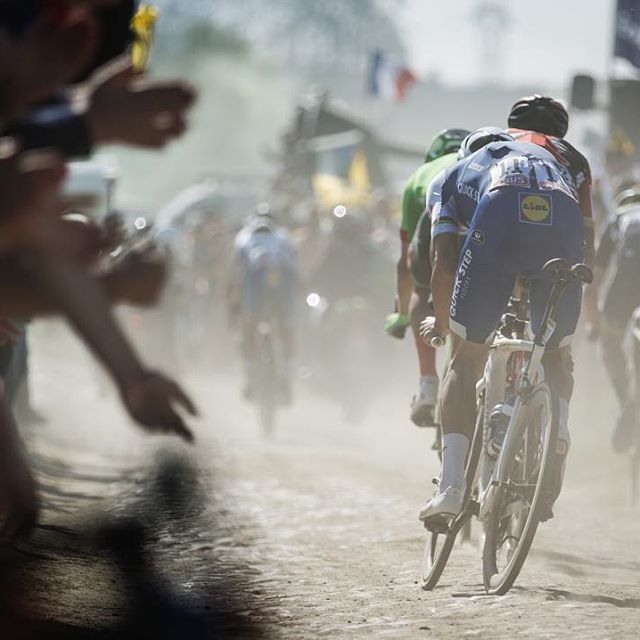Fatigue

Those things in life that are worth having are those things which are difficult to come by; perseverance is made more rewarding by the volume of messages ignored by the mind as we work towards a goal.
Fatigue comes in many forms and is normally framed in negative connotations; weariness, exhaustion – both things to avoid. For a Cyclist, it can carry a range of meanings. We may become weary of riding in the rain, as I normally am at this time of year; stuffing my shoes with yesterday’s newspaper post-ride in the hope that the dry accounting of our current events will somehow render my shoes less soggy the next day. We may become weary as we approach the big climb of the day when we know what suffering lies around the bend. To push on during an effort despite an overwhelming exhaustion that lays bare our spirit and threatens to stop our legs from turning.
But fatigue can be a beautiful thing. The fatigue that registers as a result of the post-ride status check is the gauge by which we measure satisfaction in our work. Even during the ride, we find that fatigue may not always be the sentinel of the Man with the Hammer; even as the wave of exhaustion washes over us, we learn through practice that we can continue or even lift our effort.
My favorite fatigue is the kind that sets in during a long ride; when the body has acquiesced to the mind and the signals of discomfort and pain have stopped being sent. The legs at this point take on an almost anesthetic quality to them, they don’t hurt but they don’t feel either; they have a thickness that, while they lack the punch they have when fresh, allows us to continue to push on the pedals for hours on end.
This happened to me during my most recent long ride. It was a cold, rainy day – cold enough that snow fell at the tops of the two major climbs of the day. The last big climb came at 160km and, while there is no such thing as a flat route in the Seattle area, the roads home lacked the steep grades that characterize our urban streets. The descent from Cougar Mountain froze me to my core. Starting in the snow and ending in the pouring rain, I arrived at the first of the minor climbs on the way home and pushed the button on my left shifter to slip into the little ring. Instead of making contact, my frozen hand slipped limply along the lever and did little more than jiggle the button.
This presented an unusual problem. At this point I was tired after having a piled a load of kilometers in my legs. I was also becoming just the slightest bit annoyed at how cold I was. I swerved dangerously as I experimented with bashing different parts of my hands and arms against the disappointingly stubborn shifter to try to get it to budge. Inanimate objects and I have an uneasy history, and I soon found myself giving it the customary inputs involving profanity and questioning the pureness of its mother.
Having that unpleasant business out of the way, I resigned myself to riding home in the big ring feeling fortunate that my right hand was still capable of shifting so at least I wasn’t riding a glorified single speed. And then it hit me: it was actually quite easy to carry on this way, riding in the big ring. The legs still managed to turn over and I hardly felt a thing as I pushed harder on them whenever the road pointed up. Even a few of the hills on which I struggle to stay in the big ring during my usual training rides seemed to pass under my wheels without giving undue notice.
That sensation of power combined with the heavy fatigue I carried with me distinguishes itself as one that comes only during my longest rides on those days when my form is good enough that the effort hasn’t cracked me entirely. Wholly unlike the seduction of La Volupte, it does bear a vague similarity in its rarity. Powerful fatigue; vive la Vie Velominatus.


@tessar
You may call it brutal, I call it an overnight minimum ;-)
@ChrisO
We’re not that far from each other. In fact, you shared a race-course (warning: not safe for V) with my mother recently. She lives in the southern desert, and oh boy, do I feel your pain when the heat turns up. While the nights can get quite cool down there, the heat is unbelievable at noon. At least it’s dry – I’m located near the shore, which means milder temperature variations, at the expense of high humidity. One can sweat through the 30c nights as if one just climbed the entire Alps.
That’s your mum, bloody hell – fifth overall and second in her age group.
I only did the 100km course and from the looks of her time (and her guns) she could have ripped my legs off.
So which desert are you talking about ? She’s listed as German, and I Am Not A Geographer But… they aren’t big on deserts if I recall correctly.
The ‘winter’ here has been longer than usual although we’ve already had a couple of 35C days. According to the weather people the warm stuff is here to stay now. Hopefully that also means an end to the high wind and sand storms.
@ChrisO
She has the biggest guns in the country – faster on the bike than most men, triathletes or purely-cyclists. She’s a German-born and raised, but she lives in Israel’s Negev desert; she signed up as a German to avoid potential visa/passport issues on the flight.
We’ve been getting the same sand- and wind-storms, then – I’m in Tel Aviv. I’m still debating a windproof top for tomorrow’s ride, though – the sun is out, but it’s not very warming.
@eightzero
And to these ends, I’ve scheduled my first Ultra-(imperial) Century for this September. 118 miles, 4500′ of climb. Perhaps not as much as you maniacs out there, but it should take most of the day for me and the Velomispouse.
@eightzero
Good for you. Sounds like you have plenty of time to prepare. I assume it’s an organized century? Take your time, try not to get stressed out, use the rest stops and you’ll be fine.
One unusual tip that works for me: at the last rest stop, take off your shoes and socks for a few minutes, give your feet a good flex and spread your toes. You’ll be amazed at the restorative effect!
@wiscot
Yep. http://www.rtcsnv.com/vivabikevegas/course.cfm
We do a few (imperial) centuries each season, and know the drill – stop, eat, relax. The shoe pointer is a good one -thanks!
This is also only a couple weeks after the Mt. Baker Hill Climb (ride542.com) that perhaps @Frank will have some more words on shortly (nudge nudge). But I rather suspect he is spending the next few weeks packing, dreaming of cobbles, giving all his bike equipment a tongue bath, etc etc.
I’m also thinking the next version of the V-kitte should have an image of The Man With The Hammer.
@mcsqueak
I always eat a while before the rides, or at least a while before I plan to hit the part of a ride where I’ll be riding harder; riding hard with a full stomach is asking for cramps. I find gels are the best food during a ride as they don’t require you to chew them, but they are certainly less fulfilling than a cliff bar or some such. If your’e getting hungry near the end, pop a Cliff bar halfway through your ride and you’ll be right as rain.
Paul Fournel wrote a great bit in a recent Rouleur, “Eat Before You’re Hungry”. Its a beautiful bit in his classic style, but the point is that if you’re hungry, you’re already behind the ball. Pop some food based on timing and experience, not hunger.
Just thinking of that Fignon story… yesterday I was on my last big ride before the Tour (well mini-Tour for me) – 175km with 1000m of climb and done mostly on the front, so effectively solo.
One of the guys riding was a triathlete who is doing Ironman SA on April 22 or something, and he was amazed I was doing this the week before a big ride.
Yesterday was his last big ride and he’s got nearly a month to go.
Admittedly an Ironman is going to eat a lot of energy reserves but it still seems somewhat excessive to me, and I’d be interested to see if anyone has studied whether it really enhances performance.
@Frank Agree about the hunger, but for me gels don’t stop me being hungry. I need something more solid. Gu Chomps (little jelly lumps) are a good halfway house, though nothing beats a peanut butter and jam sandwich. Unless I’m racing I would rarely plan to use a gel, or the chomps.
@ChrisO
It all depends on the goals. In the case of an Ironman, especially if you have a target finishing time (or aiming for a Kona slot), training properly involves a fuckload of rest. At the end of an Ironman, the body will be completely and utterly depleted – so one has to start it with as many reserves as possible. There’s more to preparation than the previous day’s carbo-loading: Any hint of fatigue will pop up during the race.
Proper IM preparation does indeed mean no long runs and rides for at least two weeks, if not more depending on age and recovery. Basically, what most do is complete the buildup period with a recovery week, followed by a very hard week a month before the race. Brick workouts, the last intervals and long runs/rides, everything. This puts the finishing touches on your form, and allows you to start tapering “into” a peak: Intensities are reduced, as are the distances, so your body will restore the joints and muscles completely and the body’s energy reserves rebuilt. The workouts are intended to maintain the form without actually using it – which means that tapering for too long might also end up with lost form.
Of course one can still ride long, but as soon as you’ve got a month to go, there’s a balance to strike between fun (riding) and rest – more training, at that point, won’t improve your performance at the race.
@ChrisO
In short: If you treat the IM as “an event”, there’s no need to taper as strongly. But if you treat it as a race, have goals beyond “just finishing” – then a proper taper is a vital part to arriving fresh and fast at the start-line.
@ChrisO
@tessar
Photo of a riding mate of mine on the weekend in Melbourne. Just did a 9:53 ironman. This was taken at 10:13 on the clock. Depleted reserves being repleted!
Ran a few marathons back in the day.
In the first 32 km the drink tables all had carbo drinks and water.
In the last 10 km the drinks tables had carbo drinks, water and de-fizz coke, 50% mixed with water. Bloody amazing stuff, but most effective when you are almost totally depleted.
Hit the wall at 30 km once, kept going, totally in a world of my own. Came to a drink stop (slow down, don’t stop, actually), and got the tables mixed up. It was at 34 km, from memory. Drank water, thinking it was coke. Tipped a cup of coke over my head, thinking it was water. Fair to say that the nutritional value of stuff you tip over your head is fairly low.
Doh !!
Woah! I’m really enjoying the template/theme of this site.
It’s simple, yet effective. A lot of tims it’s tough to get that “perfect balance” between user friendliness and appearance.
I mmust say you’ve done a great job with this. In addition, the blog loads extremely quick for me on Opera.
Excellent Blog!